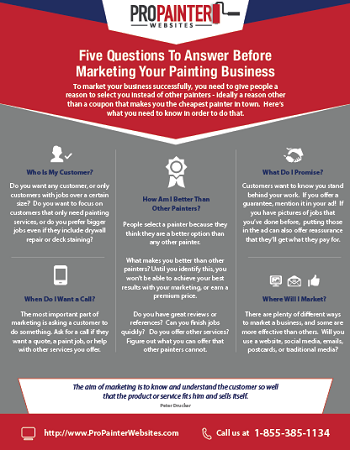Understanding Seasonal Influences On Commercial Exterior Paint: Vital Knowledge For Success
Understanding Seasonal Influences On Commercial Exterior Paint: Vital Knowledge For Success
Blog Article
Produced By-Burnham Browne
When you're planning a commercial outside painting job, seasonal elements can make or damage your outcomes. You'll want to think about how temperature and moisture impact paint application and drying times. Choosing the best period can guarantee your paint sticks properly and lasts longer. But which periods are absolutely the very best for this type of work? Allow's explore the key elements that can affect your task's success.
The Influence of Temperature on Paint Application
When you're intending a commercial external paint job, the temperature level can significantly impact just how well the paint adheres and dries out.
Ideally, you wish to repaint when temperatures range between 50 ° F and 85 ° F. If it's too chilly, the paint might not heal effectively, causing problems like peeling or cracking.
On the other side, if it's too hot, the paint can dry as well quickly, stopping appropriate adhesion and resulting in an uneven surface.
You ought to likewise take into consideration the moment of day; morning or late afternoon uses cooler temperature levels, which can be more beneficial.
Constantly examine the supplier's referrals for the certain paint you're utilizing, as they usually supply guidance on the suitable temperature level array for optimal results.
Moisture and Its Effect on Drying Times
Temperature level isn't the only environmental aspect that influences your commercial external painting task; humidity plays a considerable function also. High moisture levels can decrease drying out times considerably, impacting the total top quality of your paint work.
When the air is saturated with moisture, the paint takes longer to heal, which can lead to issues like bad attachment and a greater danger of mold development. If you're painting on a specifically damp day, be prepared for prolonged wait times between layers.
It's critical to check neighborhood climate condition and strategy accordingly. Ideally, aim for humidity levels in between 40% and 70% for optimum drying.
Keeping these consider mind ensures your project stays on track and delivers a long-term surface.
Best Seasons for Commercial Outside Painting Projects
What's the very best time of year for your industrial outside paint jobs?
Spring and very early autumn are generally your best choices. Throughout these periods, temperature levels are light, and moisture degrees are typically lower, producing ideal problems for paint application and drying.
Avoid summer season's intense heat, which can cause paint to completely dry also promptly, causing poor bond and finish. Likewise, wintertime's chilly temperatures can hinder proper drying out and healing, running the risk of the long life of your paint task.
Go for days with temperatures in between 50 ° F and 85 ° F for optimal results. Bear in mind to examine the neighborhood weather prediction for rain, as wet conditions can ruin your job.
Planning around these variables ensures your paint project runs smoothly and lasts longer.
Conclusion
Finally, planning your commercial exterior painting tasks around seasonal considerations can make a significant difference in the end result. By painting house throughout the suitable temperature levels and moisture levels, you'll make sure better bond and drying times. Bear in mind to watch on regional weather forecasts and choose the right time of year-- spring and very early loss are your best choices. Taking https://local-painters-near-me99887.vblogetin.com/40051086/necessary-inquiries-to-ask-before-hiring-house-painters will help you attain a sturdy and expert coating that lasts.
